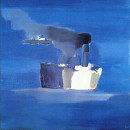6 Haiku Poets in Blithe Spirit
Blithe Spirit is that most estimable of things, the unpretentious poetry magazine that has quietly served its small readership year after year with poems, articles and discussions. Blithe Spirit is the Journal of the British Haiku Society, but with haiku are included senryu, tanka, haibun and renku. The Journal first appeared in 1991 and is now 64 page publication with a circulation around 300. I am not sure haiku, or any of the condensed eastern forms, really works in English, or – to put matters another way – convinced that the syllable restriction is a sufficient basis for poetry of any substance. Other verse techniques – rhythm, sound pattering, rhyme – would seem equally important, but its devotees obviously see matters differently. The poems are too short to select lines from, and to showcase the work I have had...
Read MoreStanza Shaping in Horace
Contemporary styles notwithstanding, translators have generally grouped Horace’s Odes in four-line stanzas to reflect the continuity of content and the Latin measures, a practice often called Meineke’s Law after their originator. A few translators have gone further and devised individual stanza shapes to represent the Latin measures, the best known of whom may be John Conington. {1} It’s an approach that works happily enough in the lighter pieces, as in I 26: The Muses love me: fear and grief, The winds may blow them to the sea; Who quail before the wintry chief Of Scythian real, is nought to me. But comes to grief in the more demanding odes packed with detail, as here in IV 14 (16-20), using a 4 4 4 4 stanza shape spectandus in certamine Martio, deuota morti pectora liberae quanti fatigaret ruinis, indomitas prope...
Read More

